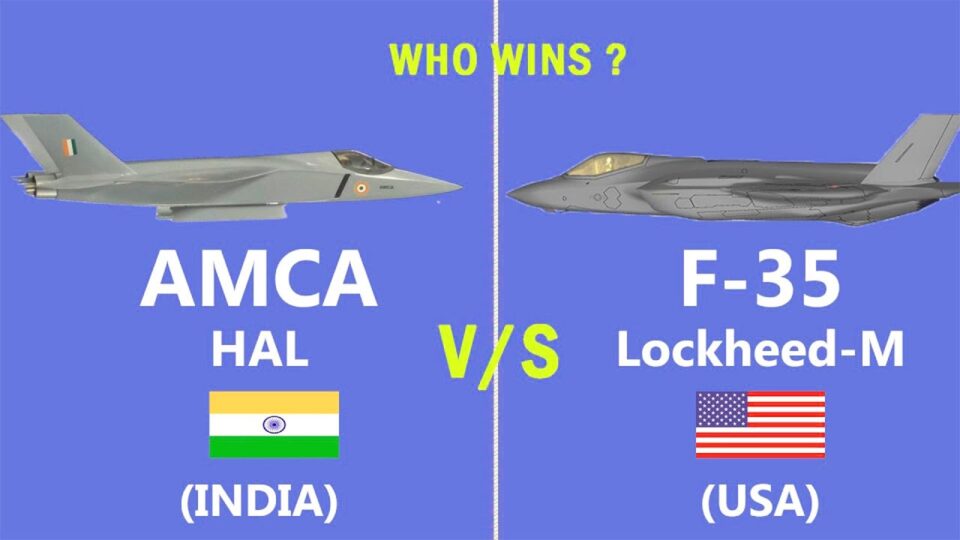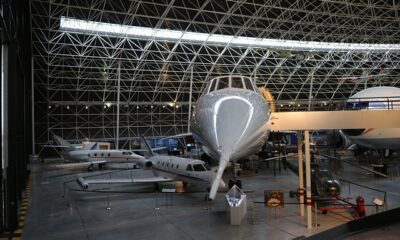Aircraft comparison
Is Rafale is better than Eurofighter Typhoon

In this article, we delve into the strengths and weaknesses of each aircraft, exploring their performance, versatility, and operational effectiveness. By examining factors such as combat capabilities, technological advancements, and mission adaptability, we aim to provide a comprehensive analysis to shed light on whether the Rafale truly outshines the Eurofighter Typhoon in the realm of modern aerial warfare.
The Rafale, developed by French manufacturer Dassault Aviation, is highly versatile, boasting advanced avionics and a wide array of weapons capability. Its design prioritizes agility and adaptability, making it effective in various combat scenarios. Both the Rafale and the Eurofighter Typhoon are advanced fighter jets with distinct strengths.
On the other hand, the Eurofighter Typhoon, a collaborative effort between several European countries, emphasizes speed and maneuverability. It’s known for its powerful engines and sophisticated radar systems. Ultimately, the choice between the two depends on specific operational requirements and preferences, with the Rafale excelling in versatility and the Typhoon in speed and agility.
The Eurofighter Typhoon has a slightly longer length at 15.96 meters compared to the Rafale’s 15.27 meters.
but the Rafale boasts a marginally larger wingspan of 10.90 meters compared to the Typhoon’s 10.95 meters.
Typhoon has a wing area of 51.2 square meters, whereas the Dassault Rafale has a smaller wing area of 45.7 square meters.
In terms of weight, the Typhoon has a higher gross weight of 16,000 kg (35,274 lb) compared to the Rafale’s 15,000 kg (33,069 lb).
Typhoon has maximum takeoff weight 23,500 kg (51,809 lb) while Rafale’s has maximum takeoff weight 24,500 kg (54,013 lb).
The Typhoon features Eurojet EJ200 afterburning turbofan engines, each capable of producing 60 kN of thrust dry and 90 kN with afterburner. Meanwhile, the Rafale utilizes Snecma M88-4e turbofans, delivering 50.04 kN dry thrust and 75 kN with afterburner.
Performance-wise, the Typhoon boasts a higher maximum speed of 2,125 km/h compared to the Rafale’s 1,912 km/h.
Both aircraft have impressive service ceilings, with the Typhoon reaching 19,812 meters and the Rafale slightly lower at 15,835 meters. Rate of climb for the Typhoon is 315 m/s, while the Rafale climbs at 304.8 m/s.
However, the Rafale has a longer ferry range at 3,700 km compared to the Typhoon’s 3,790 km.
Typhoon has a rate of climb of 315 m/s, while the Dassault Rafale has a slightly lower rate of climb at 304.8 m/s.
The Typhoon boasts exceptional agility both at supersonic and low speeds, a feat achieved through intentional relaxed stability design. Its quadruplex digital fly-by-wire control system offers artificial stability, compensating for inherent instability that manual operation alone couldn’t manage. Constructed with lightweight materials, 82% of which are composites (70% carbon fiber and 12% glass fiber), the eurofighter typhoon cost is estimated to have a lifespan of 6,000 flying hours.
What makes Dassaults Rafale fighter jet so special?:Click here
Meanwhile, the Rafale was meticulously crafted with reduced radar cross-section (RCS) and infrared signature in mind. Modifications from the initial technology demonstrator include tail-fin size reduction, fuselage reshaping, repositioning of engine air inlets beneath the wing, and extensive use of composite materials. Seventy percent of the Rafale’s intake surface area consists of composites, enhancing its stealth capabilities. However, many features aimed at minimizing the Rafale’s visibility to threats remain classified.
The Eurofighter consortium anticipates the potential for significant additional sales of multirole combat aircraft to both partner and export markets. While a base scenario considers the existing fleet of 680 jets across nine countries. sustaining production rates for a limited period, further orders are deemed essential for long-term viability. Eurofighter Awaits New Orders.
Serbia is poised to finalize what could be its most substantial weapons procurement deal in modern history, likely with France. Despite its status as a candidate for EU membership and its stance of military neutrality, Serbia’s military landscape is gradually shifting away from its reliance on Soviet-era equipment. Recent acquisitions from both Western and Chinese suppliers signal a broader diversification strategy in defense procurement.
How powerful is Rafale as compared to Russia’s Su-35S:Click here
The Typhoon is equipped with a specially designed variant of the Mauser BK-27 27 mm cannon, originally developed for the Panavia Tornado. Positioned in the starboard wing root, this single-barrel, electrically fired, gas-operated revolver cannon features a new linkless feed system and can achieve a firing rate of up to 1700 rounds per minute.
In terms of armament versatility, the Rafale utilizes a store management system compliant with MIL-STD-1760, facilitating seamless integration of various weapons and equipment. With 14 hardpoints (13 on the Rafale M version), including five suitable for heavy armaments or auxiliary fuel tanks, the rafale vs su 35 Rafale boasts a maximum external load capacity of nine tons. Additionally, it is armed with the 30 mm GIAT 30 revolver cannon and can be configured with an array of laser-guided bombs and ground-attack munitions.

Aircraft comparison
Comparison of India’s AMCA and American F 35

In the evolving realm of advanced military aviation, the Advanced Medium Combat Aircraft (AMCA) from India and the F-35 Lightning II from the United States stand as key symbols of their respective nations’ ambitions.
The AMCA, still in the development phase, embodies India’s strategic vision for a homegrown, cutting-edge fighter jet designed to meet future combat challenges. On the other hand, the F-35, an already operational marvel of American aerospace engineering, has set the standard for modern stealth and multi-role versatility.
Comparison of Russian Su30 and France built Rafale fighter jet
“In this comparison, we will delve into the two different fighters, the AMCA and the F-35, examining their technological innovations, strategic roles, and potential impacts on global air combat dynamics.”
The Advanced Medium Combat Aircraft (AMCA) is an advanced Indian fighter jet, featuring a single-seat, twin-engine design with all-weather capabilities and fifth-generation stealth technology. It is being developed for both the Indian Air Force and the Indian Navy, aiming to enhance India’s combat prowess with its multirole versatility.
In contrast, the Lockheed Martin F-35 Lightning II represents an American family of single-seat, single-engine stealth aircraft, known for its air superiority and strike mission capabilities. The F-35 also excels in electronic warfare and offers advanced intelligence, surveillance, and reconnaissance functions.
- The AMCA measures 17.6 meters (57 feet ) in length, while the F-35A is slightly shorter at 15.7 meters (51.4 feet).
Height:
- The AMCA stands at 4.5 meters (14 feet 9 inches) in height, whereas the F-35A is marginally taller at 4.4 meters (14.4 feet).
Wing Area:
- The AMCA’s wing area is 55 square meters (590 square feet), whereas the F-35A has a significantly larger wing area of 43 square meters (460 square feet).
Empty Weight:
- The AMCA has an estimated empty weight of 12,000 kilograms (26,455 pounds), while the F-35A’s empty weight is 13,290 kilograms (29,300 pounds).
Maximum Takeoff Weight:
- The AMCA’s estimated maximum takeoff weight is 25,000 kilograms (55,116 pounds), compared to the F-35A’s maximum takeoff weight of 29,900 kilograms (65,918 pounds).
Fuel Capacity:
- The AMCA has a fuel capacity of 6,500 kilograms (14,300 pounds), while the F-35A carries 8,278 kilograms (18,250 pounds) of internal fuel.
Maximum Speed:
- The AMCA can achieve a maximum speed of Mach 2.15 (2,600 km/h or 1,600 mph), whereas the F-35A reaches a maximum speed of Mach 1.6 at high altitude and Mach 1.06 (700 knots or 806 mph) at sea level.
Range:
- The AMCA boasts a ferry range of 5,324 kilometers (3,308 miles) and a combat range of 1,620 kilometers (1,010 miles). In comparison, the F-35A has a range of 2,800 kilometers (1,700 miles) and a combat range of 1,410 kilometers (870 miles) in air-to-air configuration.
Service Ceiling:
The AMCA can reach a service ceiling of 20,000 meters (65,000 feet), while the F-35A operates up to 15,000 meters (50,000 feet).
In a bold step towards innovation, India’s Advanced Medium Combat Aircraft (AMCA) program is set to revolutionize its production process with 3D printing technology. By integrating 3D printing, HAL anticipates substantial benefits ranging from cost reduction and faster turnaround times to optimized material usage. The adoption of 3D printing not only promises to streamline production but also offers opportunities to mitigate material waste, a critical challenge in aerospace manufacturing.
The F-35 A design is robust; in contrast to its 8,000-hour design life, its service life has been evaluated to reach 24,000 hours. The F-35A has an extremely low radar cross-section, at 3.8mm, which reduces its radar profile. Multiple software and processor updates have been made to the F-35A. Progress includes improved weapon capability and electronic warfare systems. The current version, known as Block 3F baseline, is moving towards Block 4, with software and weapon improvements planned twice yearly in 2024.
The AMCA is currently being developed and will have sophisticated avionics, including an electronic pilot function. A fighter platform typically needs two pilots. One is a pilot who flies, while the other is a mission pilot (who directs the flying pilot). Only one cockpit and an electronic pilot will be present on this jet. As a way to improve situational awareness and collaborate with the advanced electronic warfare (EW) suite onboard the AMCA, distributed passive sensors with AI-assisted multi-sensor data fusion are anticipated.
The F-35 Lightning II features a single-seat cockpit with advanced automation and AI, enabling the pilot to handle both flying and mission-critical tasks. Its Distributed Aperture System (DAS) offers a 360-degree view, enhancing situational awareness. Supported by an advanced electronic warfare suite, the F-35’s AI-driven sensor fusion integrates data from various sensors, providing a complete battlefield picture. This technology reduces the pilot’s workload and significantly boosts the aircraft’s combat effectiveness.
since HAL realised the primary goals and advancements needed for AMCA for future aviation projects when constructing aircraft. In collaboration with international suppliers and via innovative research for newer weapons, the Defense is advancing its weaponry. The Brahmos air-to-ground missile, ASTRA, RUDRAM, Laser guided, and precision munition pods will all be made available by the AMCA. Radar and infrared search and tracking features are some additional elements that aid aircraft detection.
The F-35 features two internal weapon bays and four weapon stations. There are air-to-air missiles at the two inboard weapon stations. Among the air-to-surface weapons for the outboard station are the Joint Direct Attack Munition, the Paveway line of bombs, the Joint Standoff Weapon, and cluster munitions. The AIM-9X or AIM-132 ASRAAMs can be mounted on either of the wingtip pylons, which are canted outward to lower the radar cross-section.
-

 Aviation2 months ago
Aviation2 months agoNew EU Carry-On Rules Begin September 2024: What to Expect
-

 Aviation2 months ago
Aviation2 months agoBoeing confirms 797: A New Era for Mid-Size Aircraft
-

 Aviation2 months ago
Aviation2 months agoLockheed and Tata Team Up to Build C-130J MRO Facility in India
-

 Aviation1 month ago
Aviation1 month agoMicrosoft Flight Simulator Raises $3 Million to Bring Back the An-225 Mriya
-

 Tech2 months ago
Tech2 months agoChina Developing Jet to Travel Anywhere in Two Hours
-

 Airlines2 months ago
Airlines2 months agoQantas Engineers Stage Walkout Over Cost of Living Concerns
-

 Aviation2 months ago
Aviation2 months agoBoeing Offers 25% Pay Increase & Promise to Build Next Plane in Seattle
-

 Airlines1 month ago
Airlines1 month agoQatar Citizens Can Travel to the United States Without a Visa








